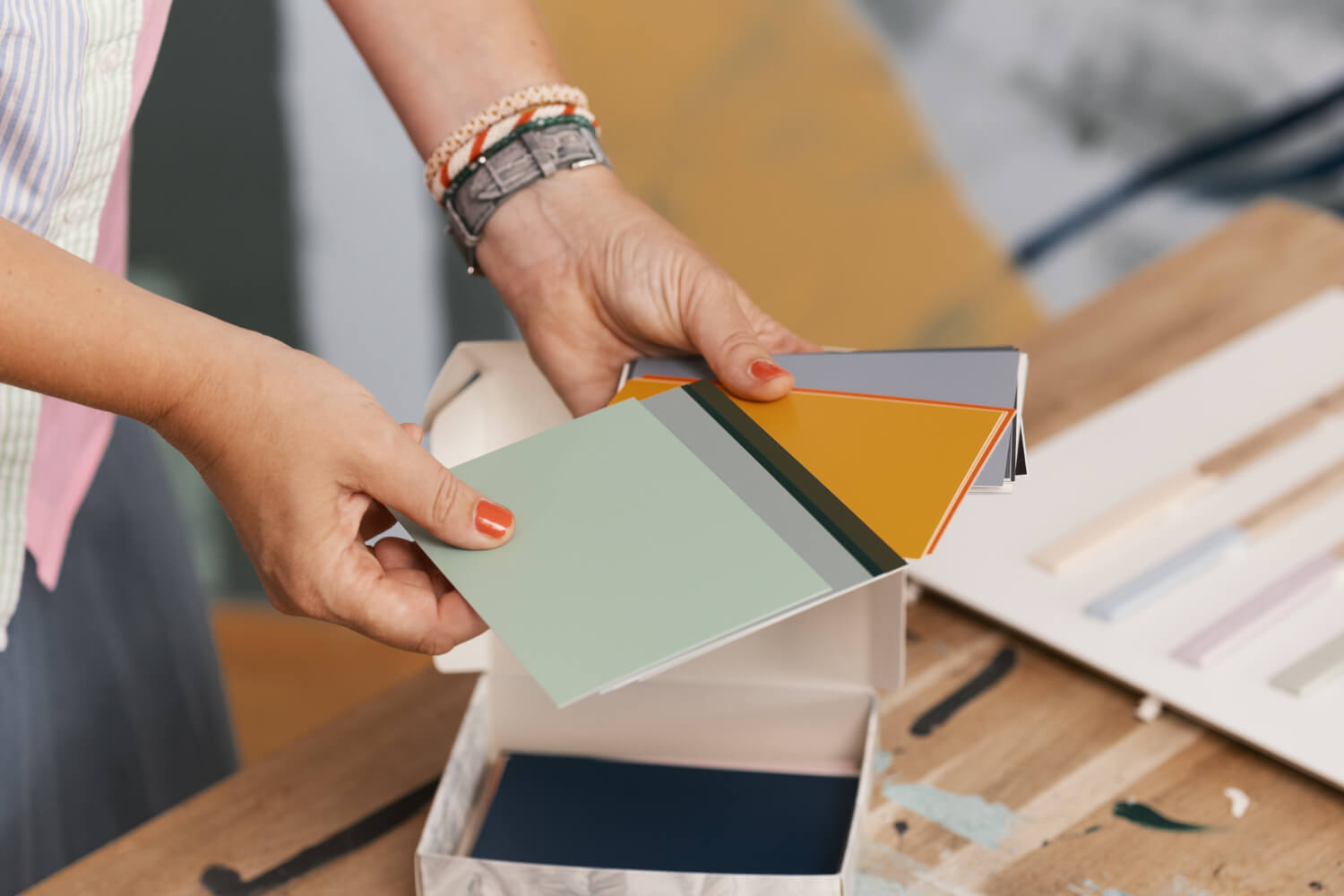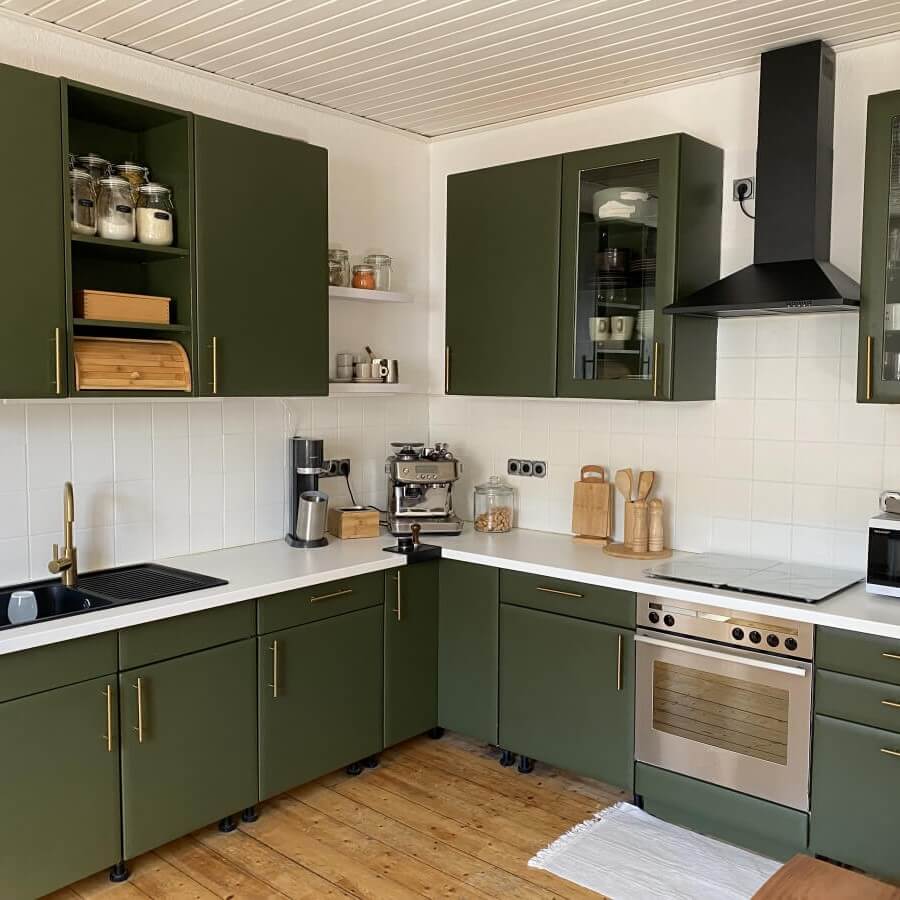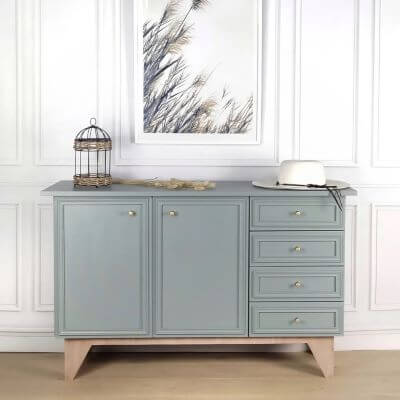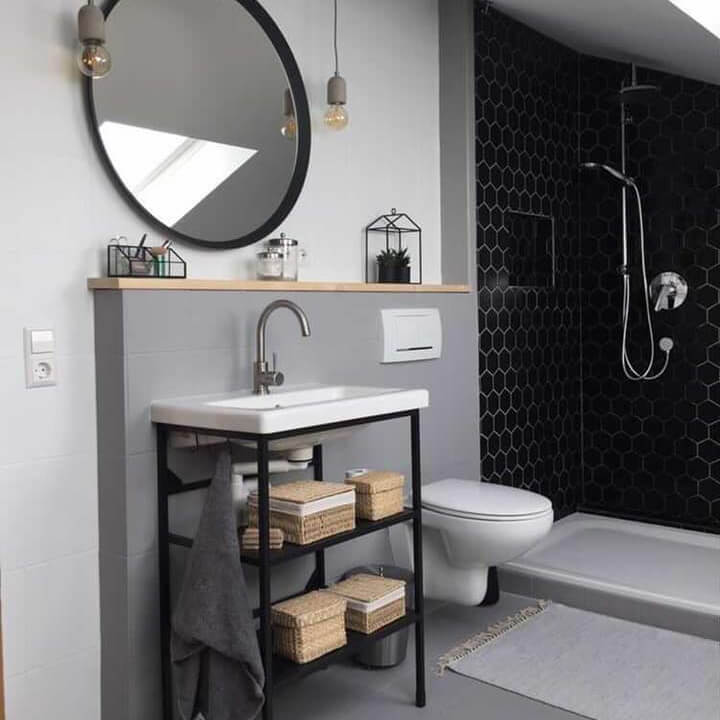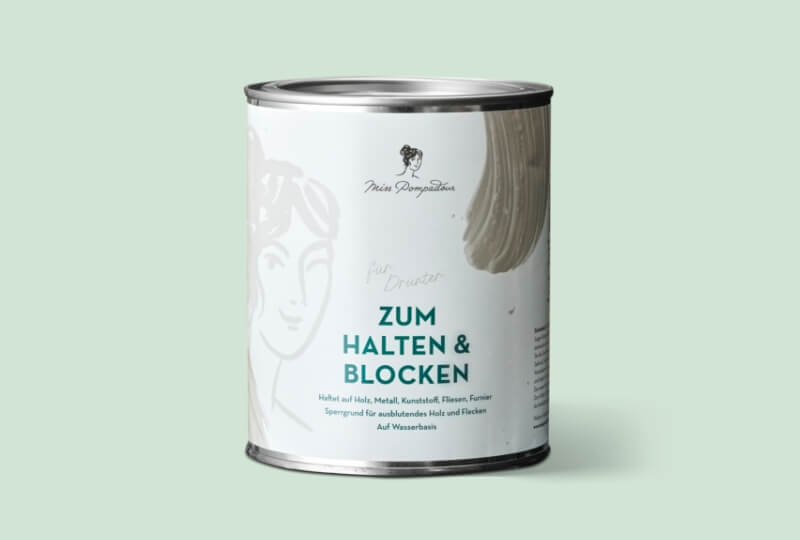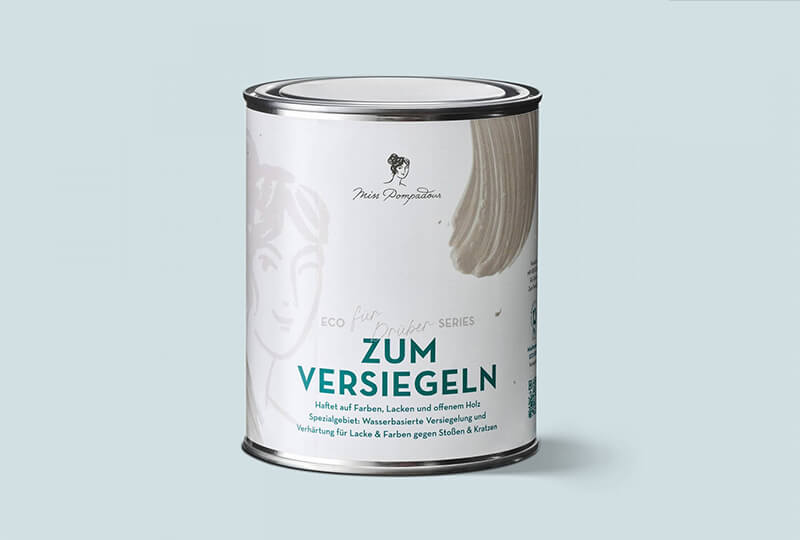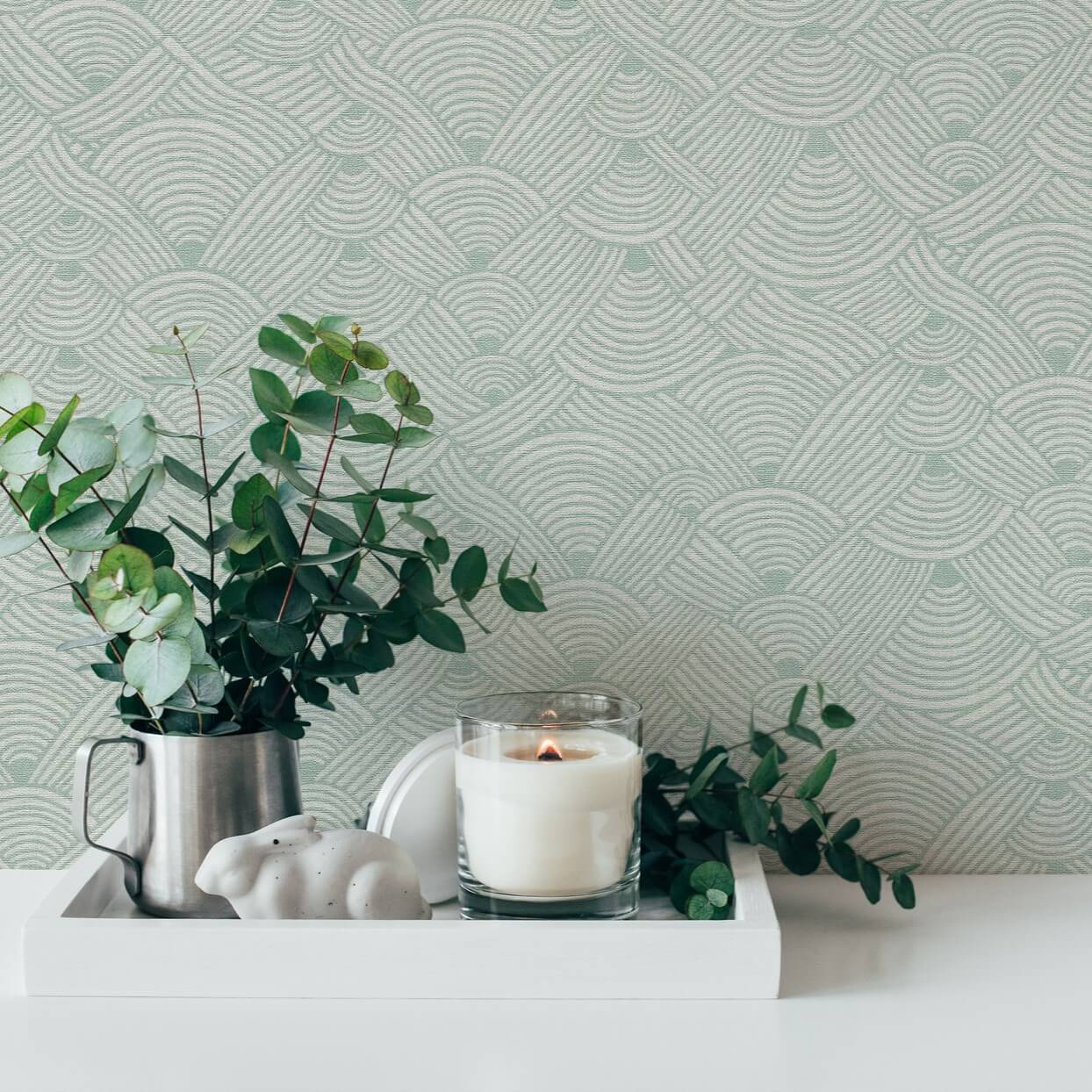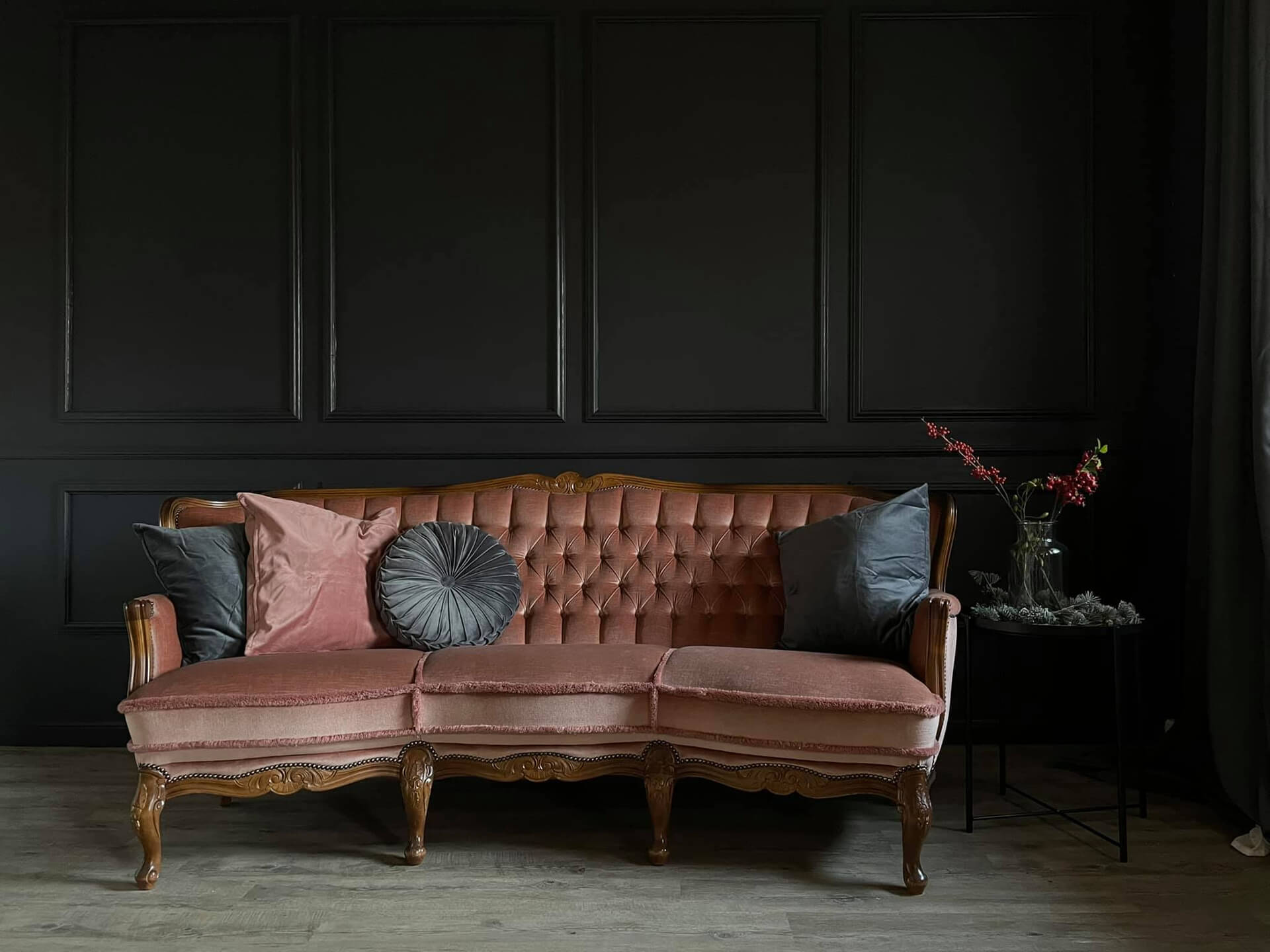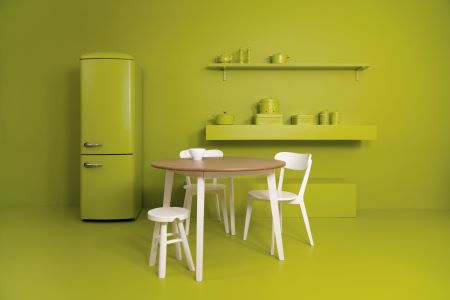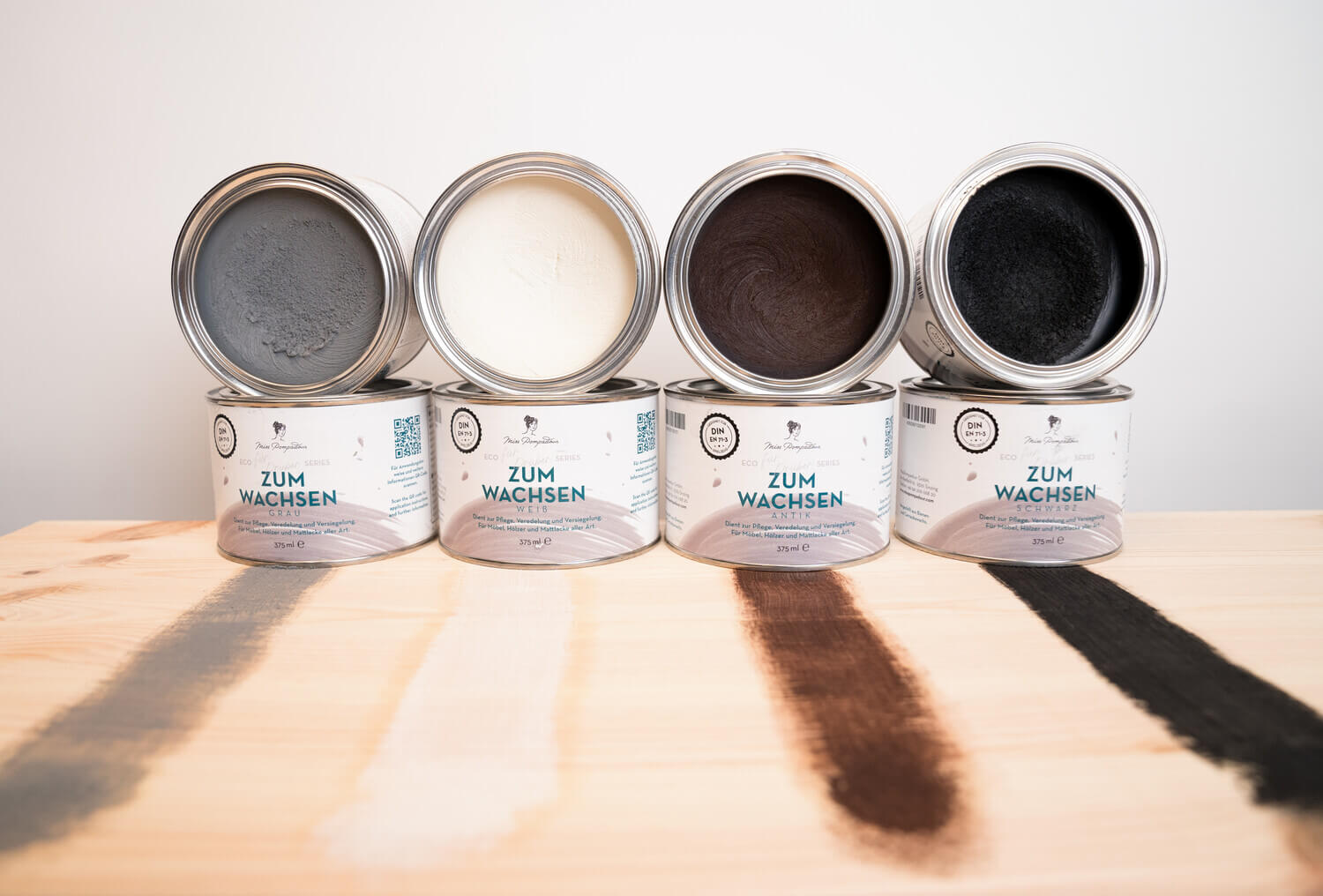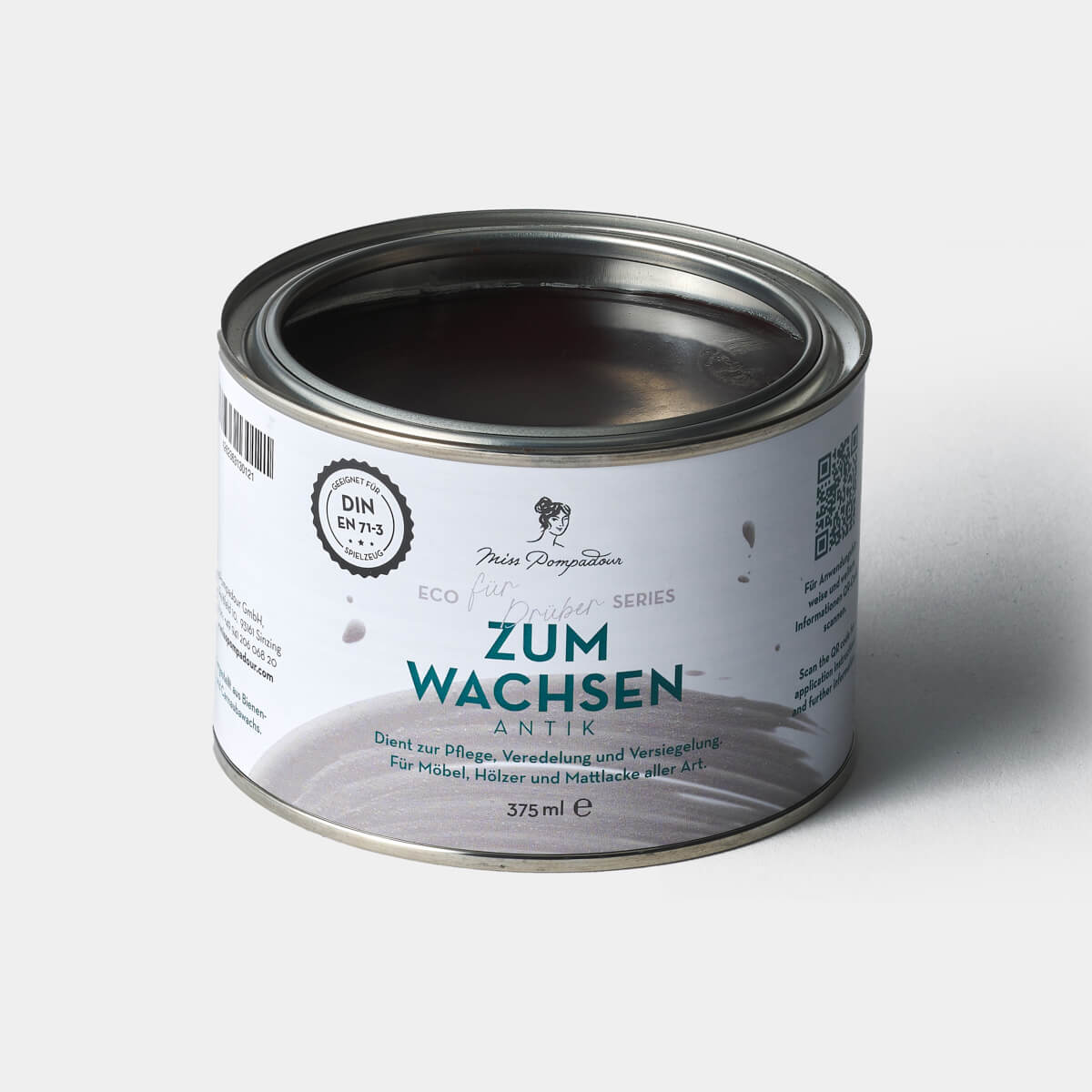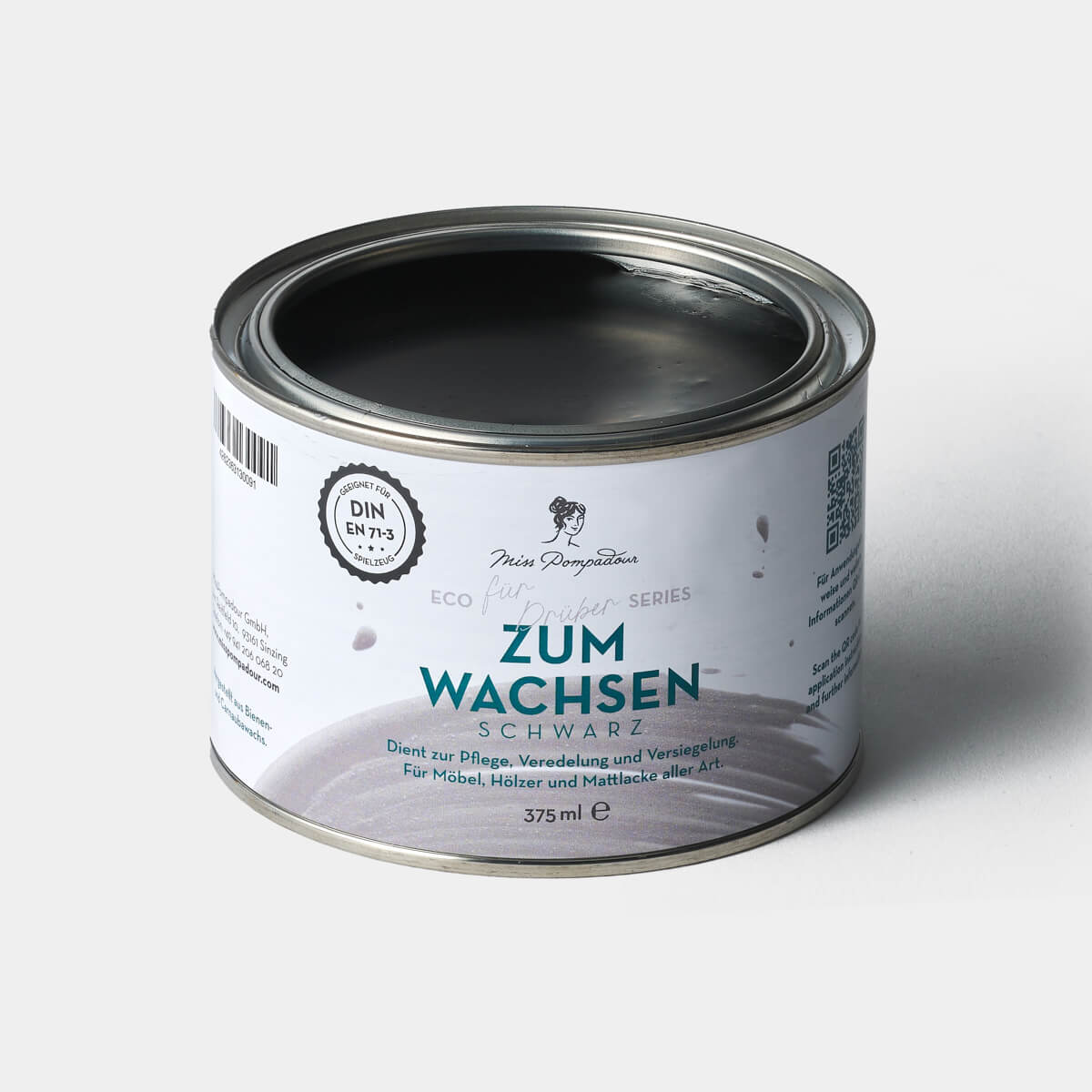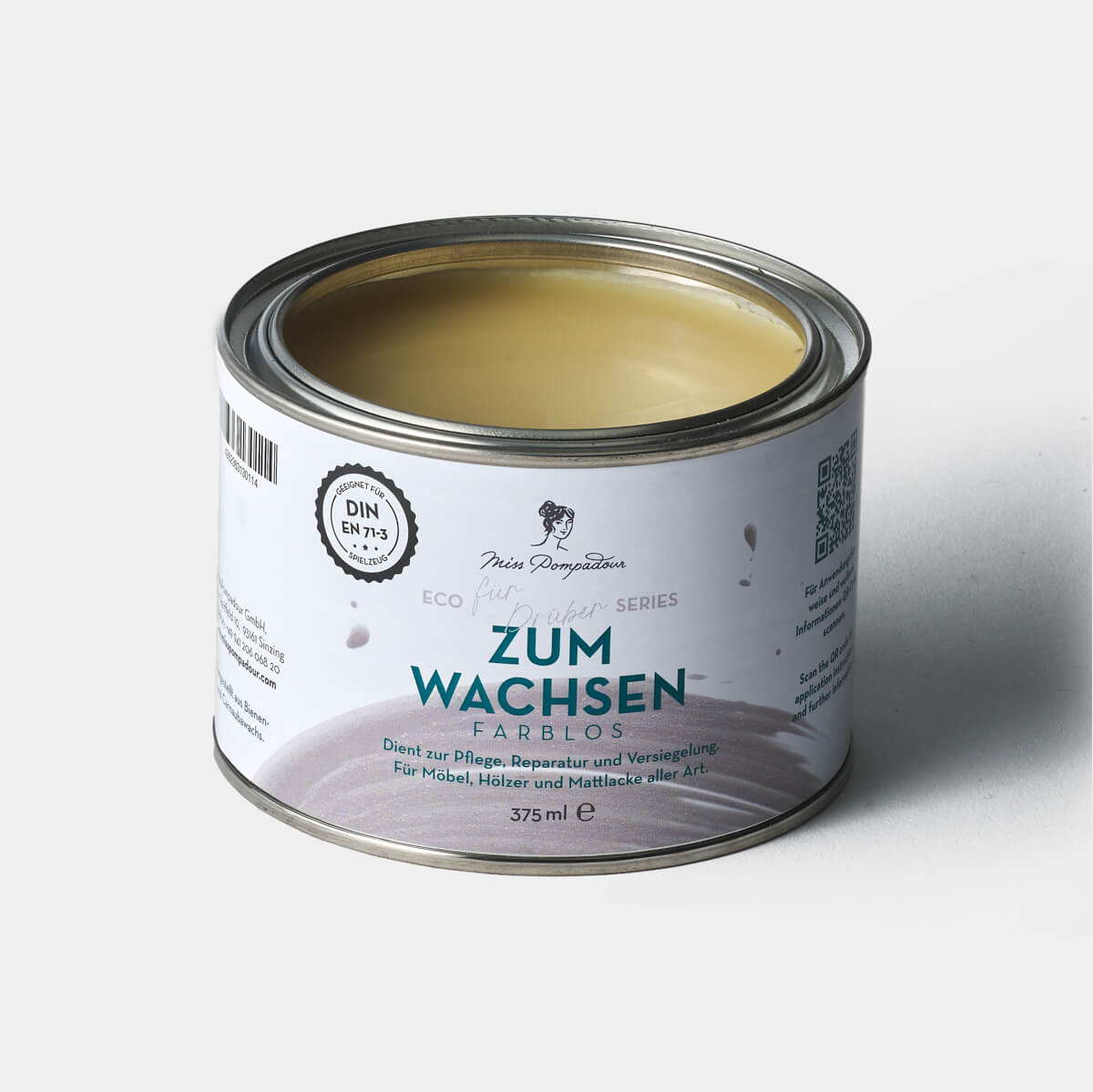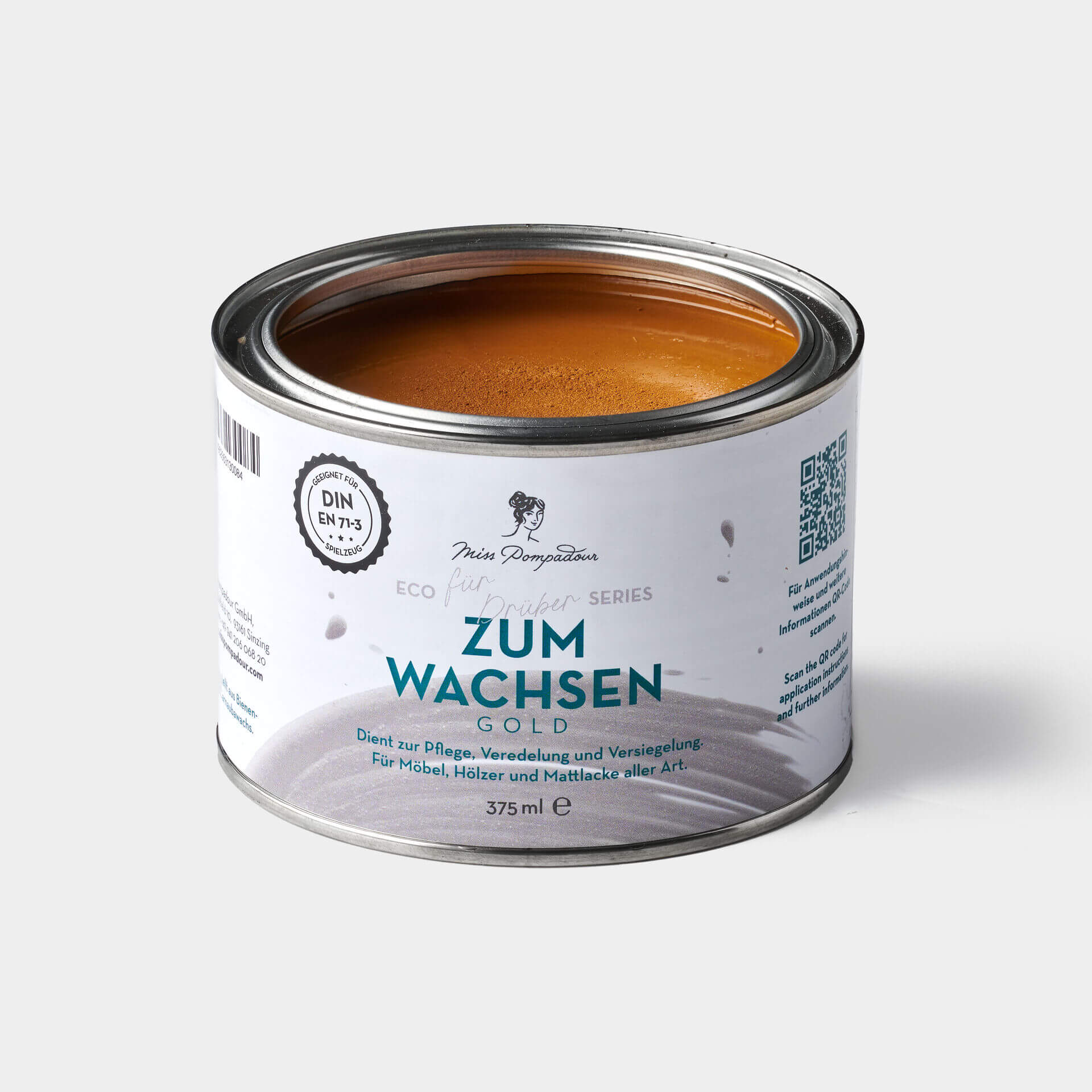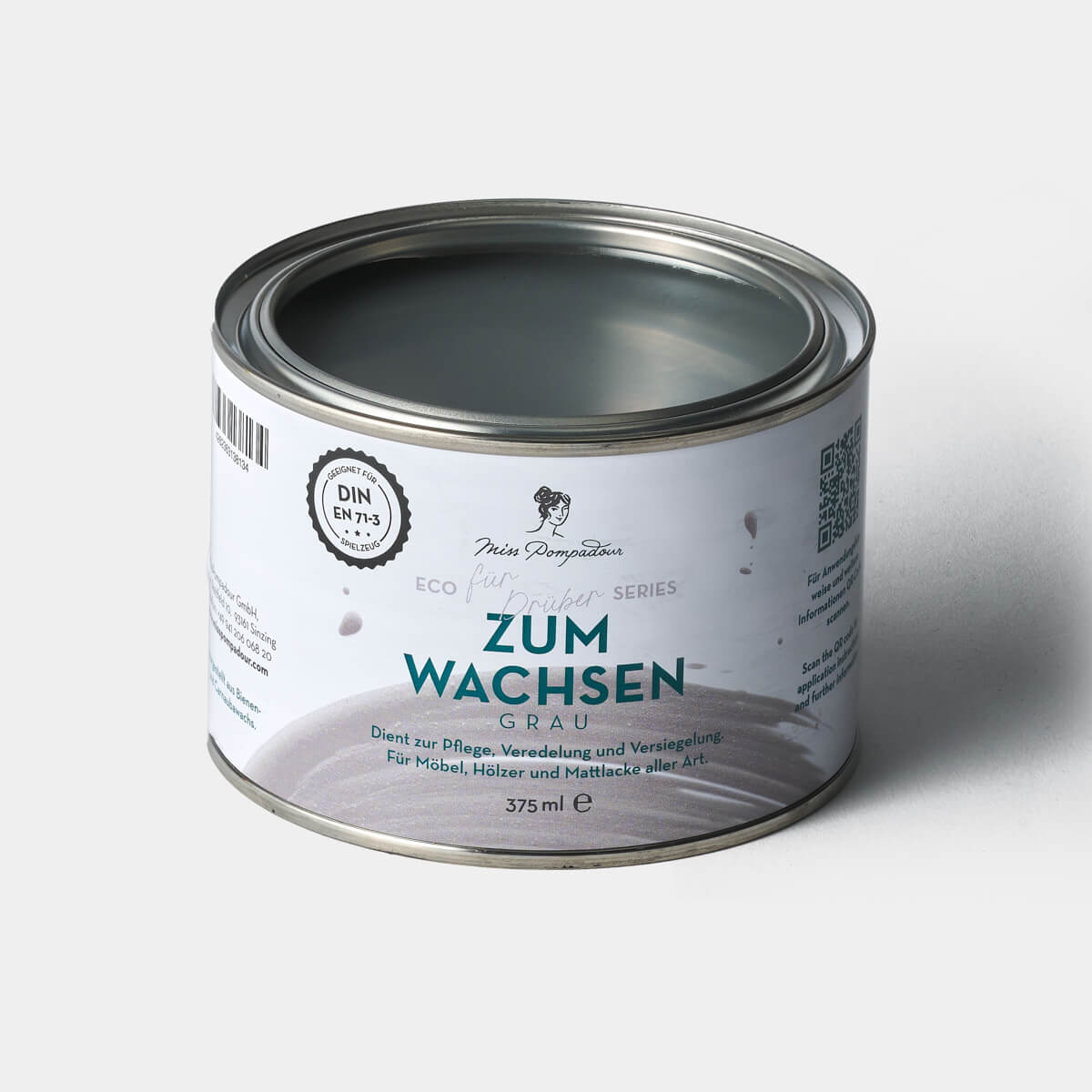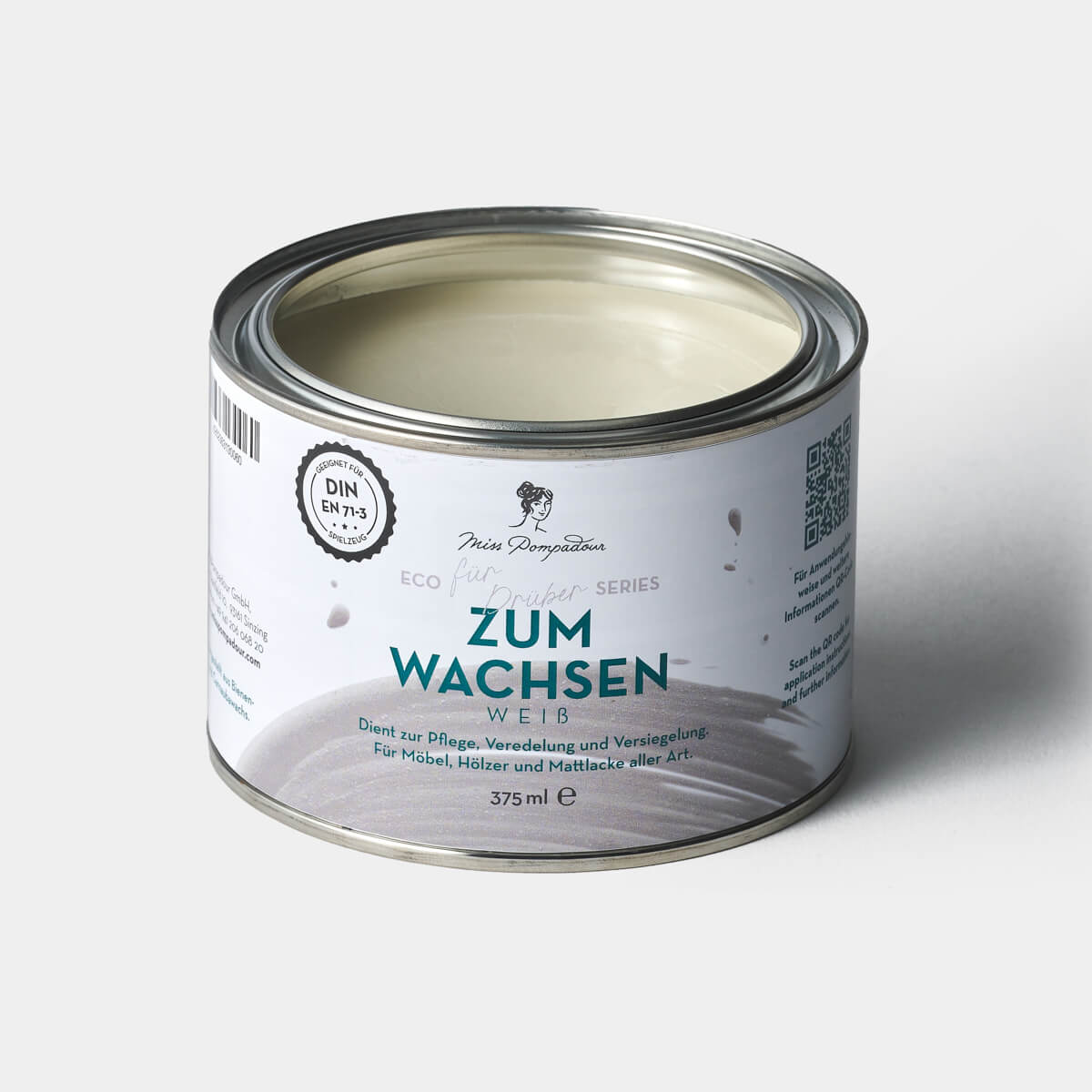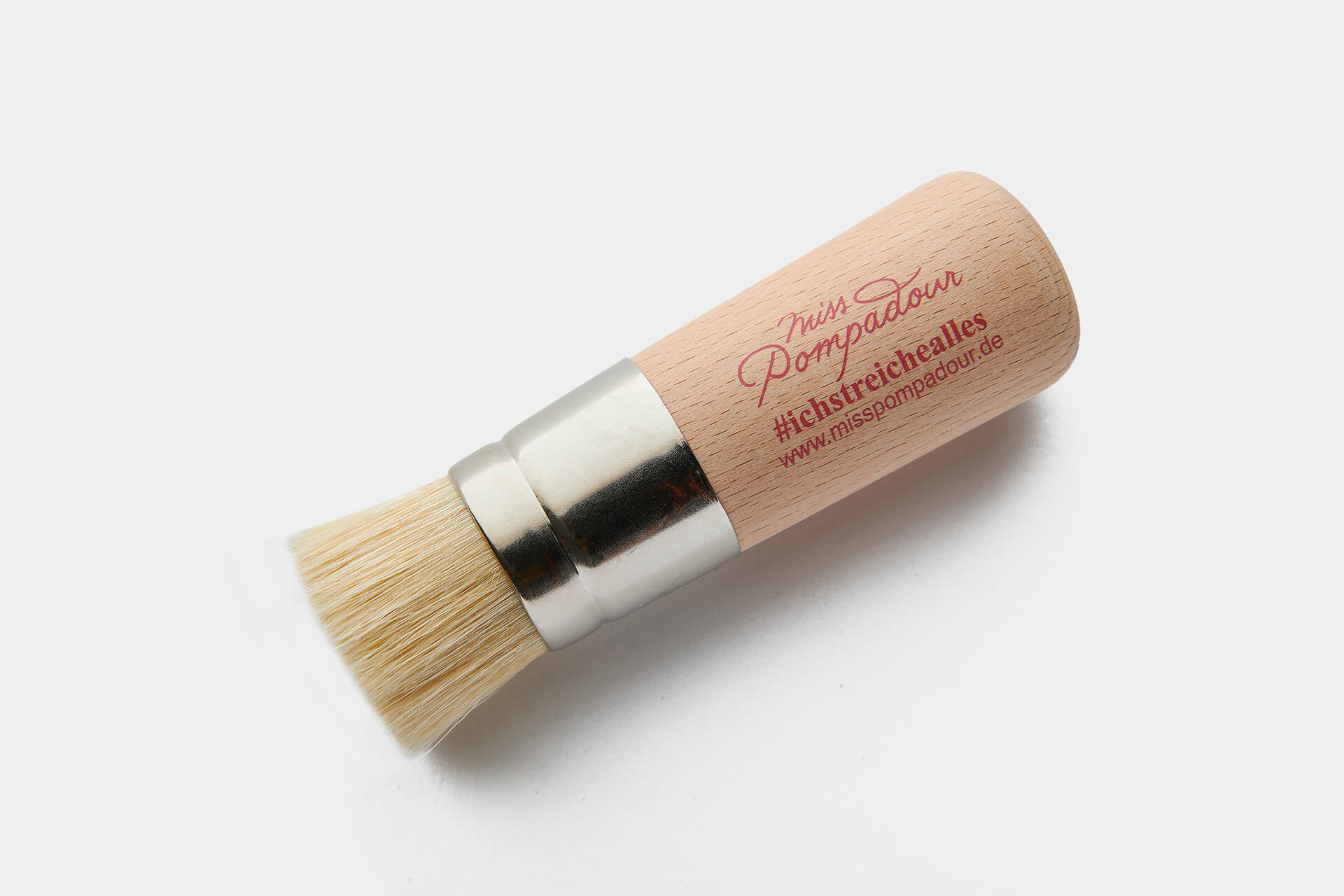

Wood wax for colour and as a topcoat
Wood wax can be used to create a stabilising surface on natural wood. It is available as a colourless wax, as an antique wax in dark brown and as coloured waxes in many shades of grey and white. Wax can be used to freshen up yellowed wood tones, "fire up" natural wood and add colour to wooden surfaces. All waxes except the colourless waxes contain natural chalk and pigments.
Wood wax instead of colour
Waxes are particularly suitable if you do not want to cover the grain, for example.
This is because, unlike wood varnishes, waxes are not opaque, but preserve the wood structure. And this is often desirable, especially with wooden ceilings. However, you must bear in mind that the original wood colour always shimmers through and thus also determines the colour shade. It is therefore not possible to determine the final colour shade exactly in advance.
The waxes are best applied as thinly as possible with a wax brush. If the desired colour intensity has not yet been achieved, apply a second or possibly even a third coat after drying.
Colourless wood wax
The colourless waxes offer you the option of additionally stabilising and finishing matt paints with wall emulsion or matt varnish.
Wood wax as patina wax
You always need patina waxes in dark brown if you want to create vintage-style furniture. In this case, the furniture is first painted in the desired matt colour. Then add dark accents with the antique wax. The wax should be applied carefully and with feeling so that the painted colour is not completely changed. Finally, polish with a dry, soft cloth.
You also have the option of treating and finishing dark natural woods such as walnut or mahogany with antique wax. This treatment can be refreshed from time to time like a furniture polish

